Bodh Gayā is famous for being the place where Gautama Buddha is said to have attained enlightenment under what became known as the Bodhi Tree. It is a religious site and place of pilgrimage for Buddhists around the world. In 2002, Mahabodhi Temple, located in Bodh Gayā, became a UNESCO World Heritage Site.
The Mahabodhi Temple Complex covers an area of approximately 11.9 acres. All transports will drop you at a spot near the Mahabodhi temple; you need to walk the rest 500 meters to reach the temple site, as there are restrictions on commercial vehicles around the temple complex. In addition to the main and stunning Mahabodhi Temple, there are other smaller temples and monasteries inside the complex.
- Mahabodhi Temple
- Bodhi Tree
- Muchalinda Lake
- Chinese Temple and Monastery
- Thai Temple and Monastery
- Royal Bhutan Monastery
- Great Buddha Statue
- Meditation Park
- Vishnupad Temple, Gaya
Mahabodhi Temple – The original temple at this site was built by Emperor Asoka in the 3rd century BCE, while the current temple, a significant example of early brick architecture in India, dates from the 5th or 6th century CE. The temple stands tall and proud portraying the architectural splendor of the past. Standing on a 48 square feet tall basement, the structure resembles a pyramid but for its cylindrical top. Apart from followers of Buddhism, Hindu devotees too consider this site important to them, as they consider Buddha as the ninth incarnation of god Vishnu. A 9th century Shivalingam is also found in the temple.
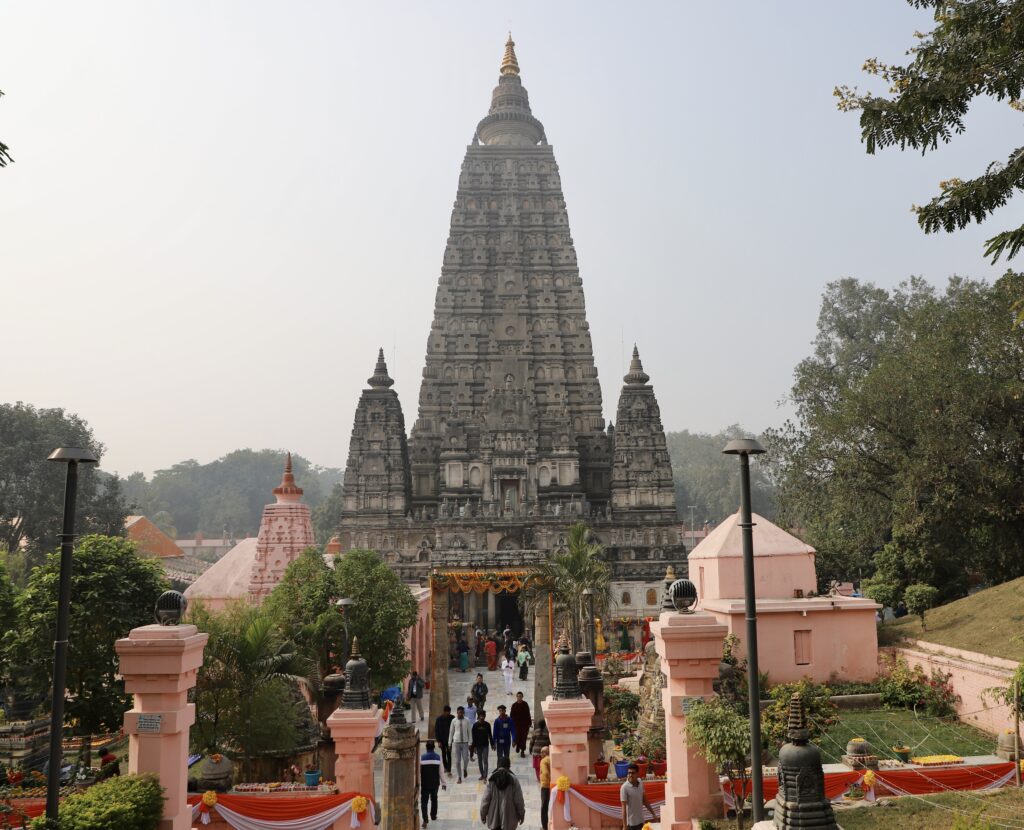
The inner sanctum of the temple houses the main shrine, also called “the Diamond Throne”. It is said that the Buddha attained enlightenment on the full moon night in 527 BC at this very place, behind which stood the original Bodhi Tree.
On the day we visited Bodh Gaya, the entire complex was decorated with colorful flowers in anticipation of Dalai Lama’s visit after a two-year gap.
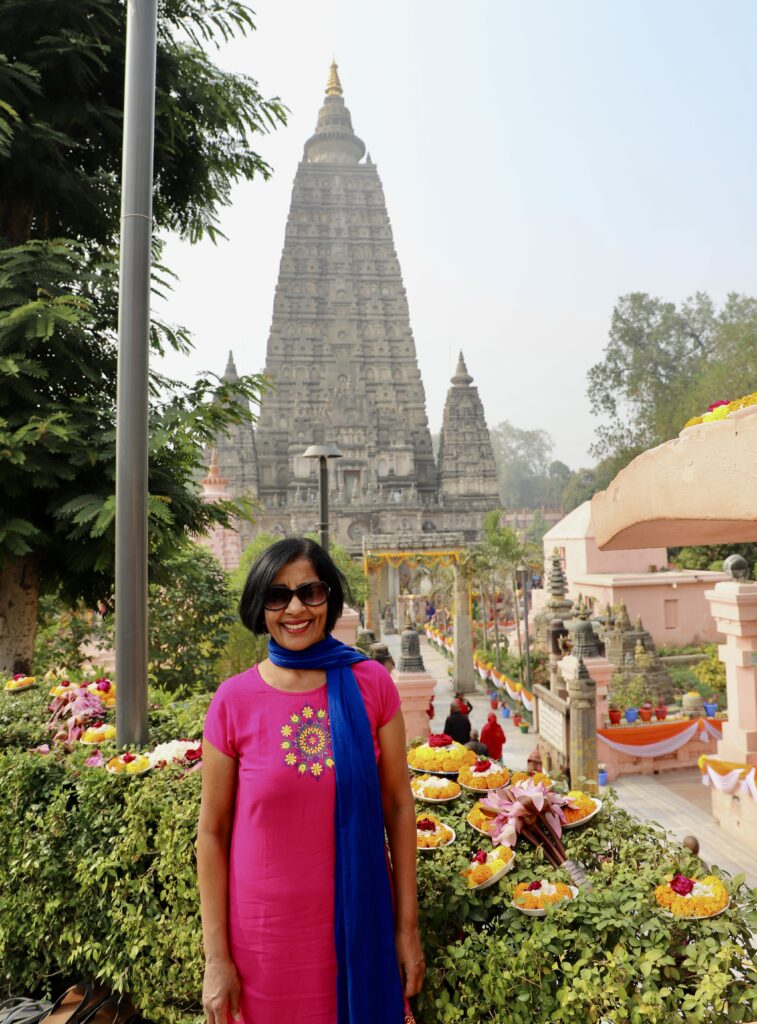
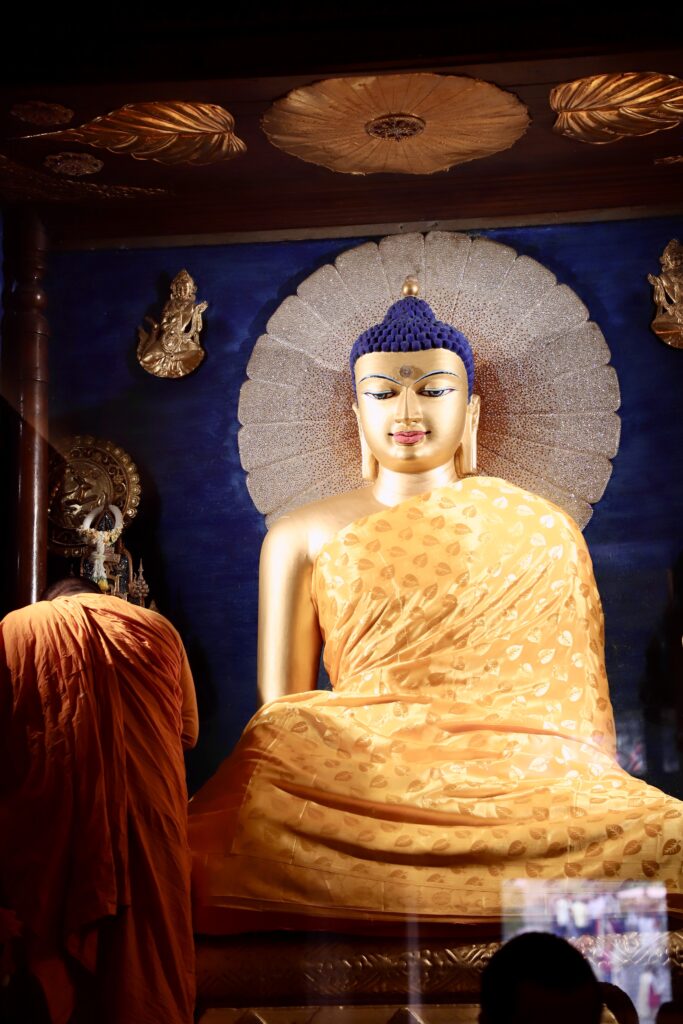
Bodhi Tree – This tree (Botanical name: Ficus religiosa), is where Gautama Buddha is said to have attained enlightenment, and is a central focus of Buddhist pilgrimage. It is often decorated with flowers especially during festival time. Also known as the peepal tree, the Bodhi Tree is a species of fig native to the Indian subcontinent. The original tree as well as several later ones died or was destroyed. The present Bodhi Tree, said to be a descendent of the original one, was planted in the 19th century during the restoration work carried out by the British. The original tree grew directly behind the main shrine but was replanted in its present position when the Mahabodhi Temple was built.
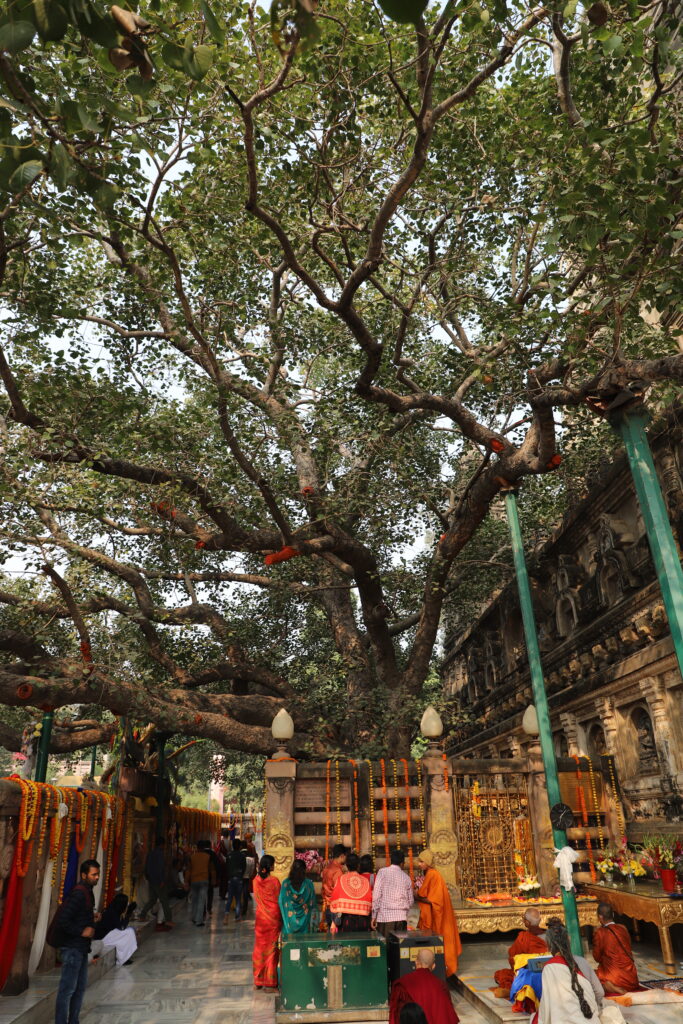

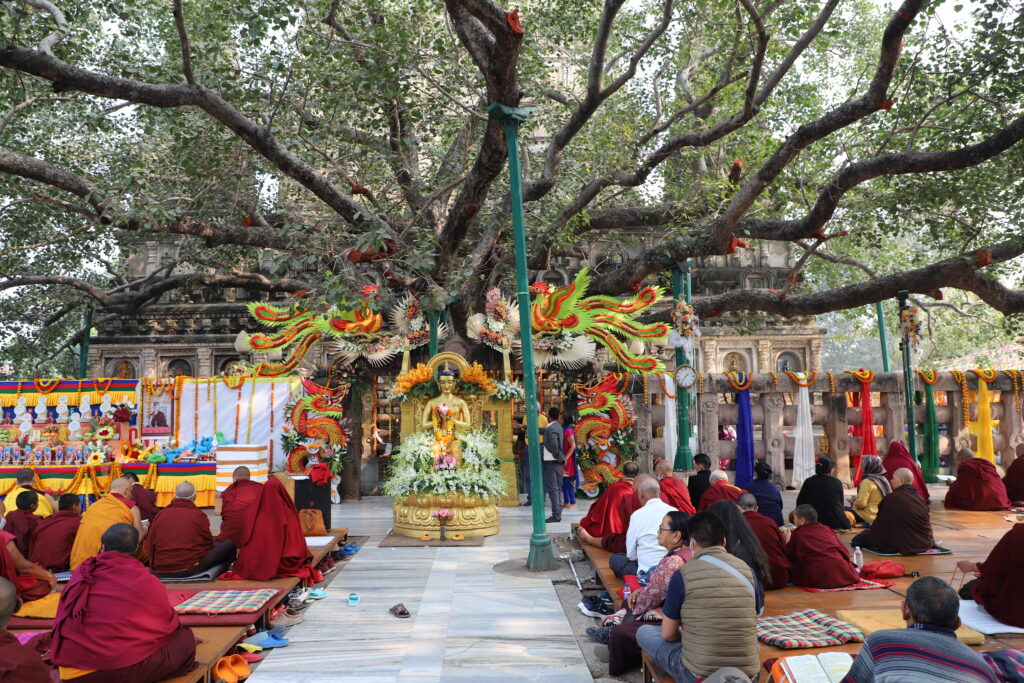
Muchalinda Lake – This is another place that is considered a sacred place for followers of Buddhism. It is said that while Buddha was into the sixth week of meditation by the side of Muchalinda Lake, a severe storm struck. Muchalinda, the snake king protected Buddha who was deep in meditation. The temple found here houses the sculpture of Buddha and the snake in the act of protecting the god. The lake is a feast to nature lovers, as it is surrounded by lush green trees.
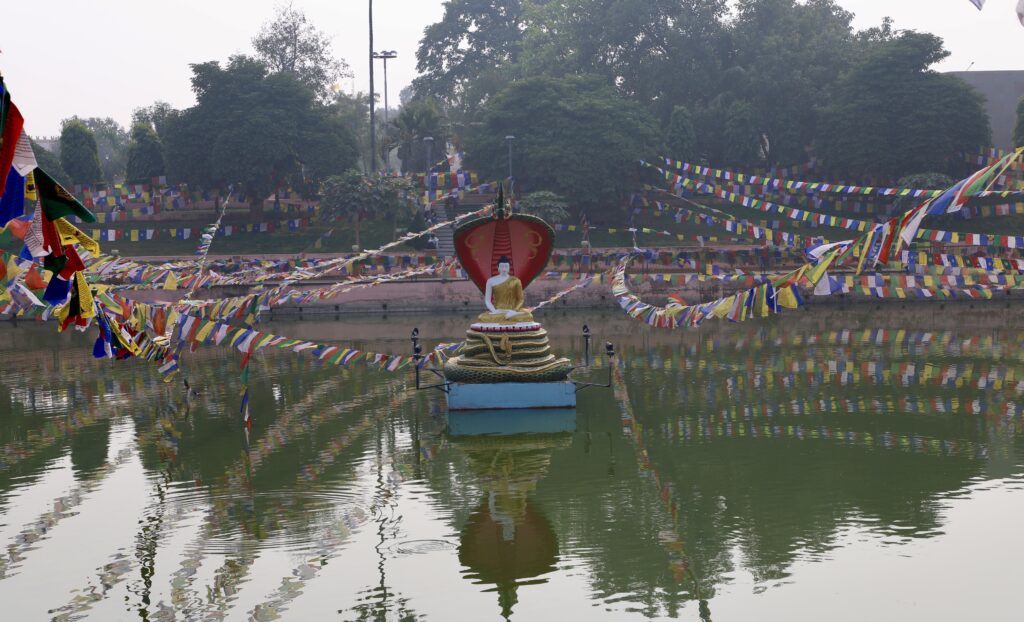
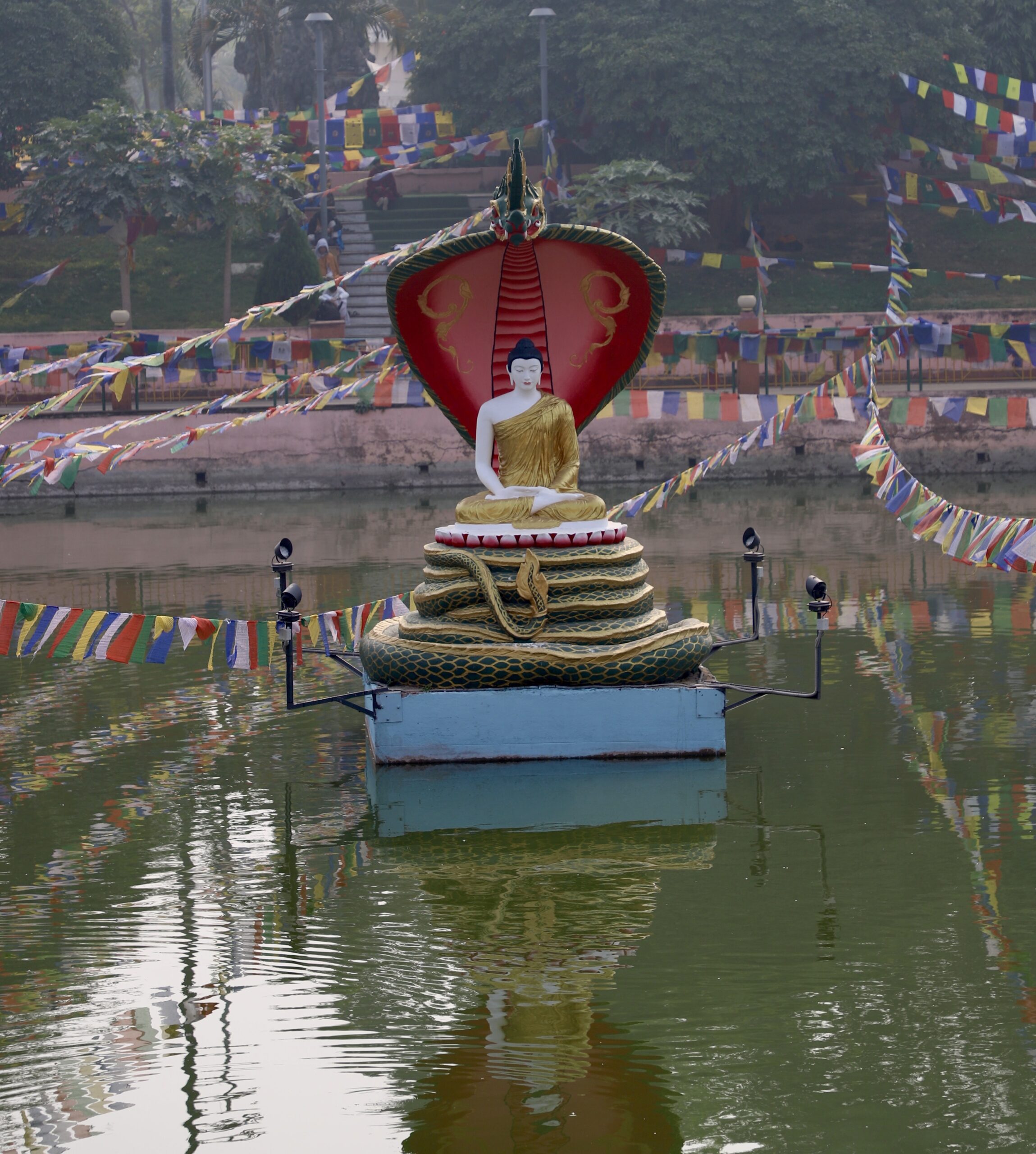
Chinese Temple and Monastery – Located near Mahabodhi temple, the Chinese monastery was built by the government of China in the year 1945. The monastery was renovated in 1997 and houses three golden statues of Buddha.
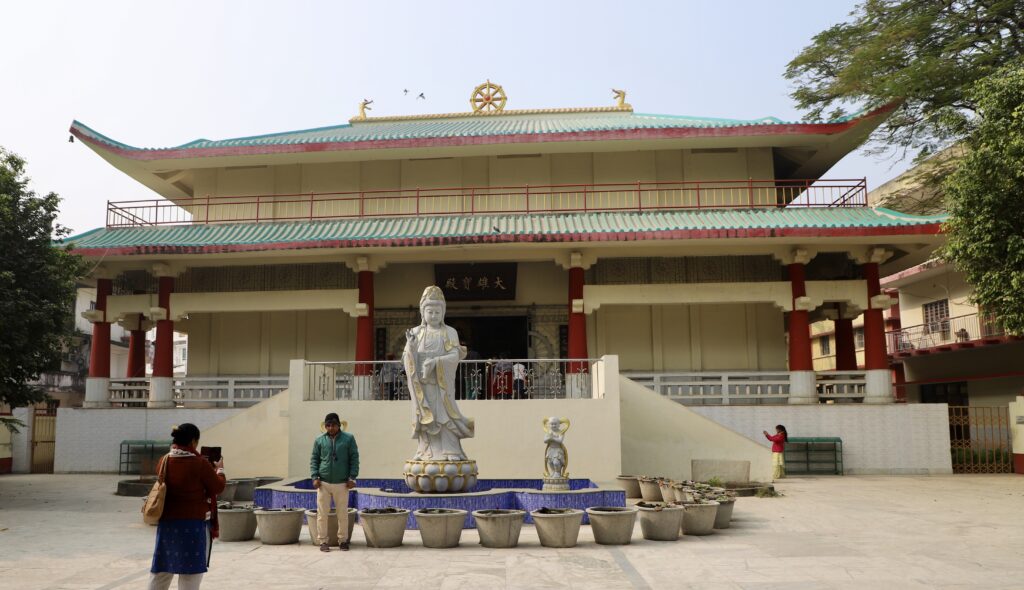
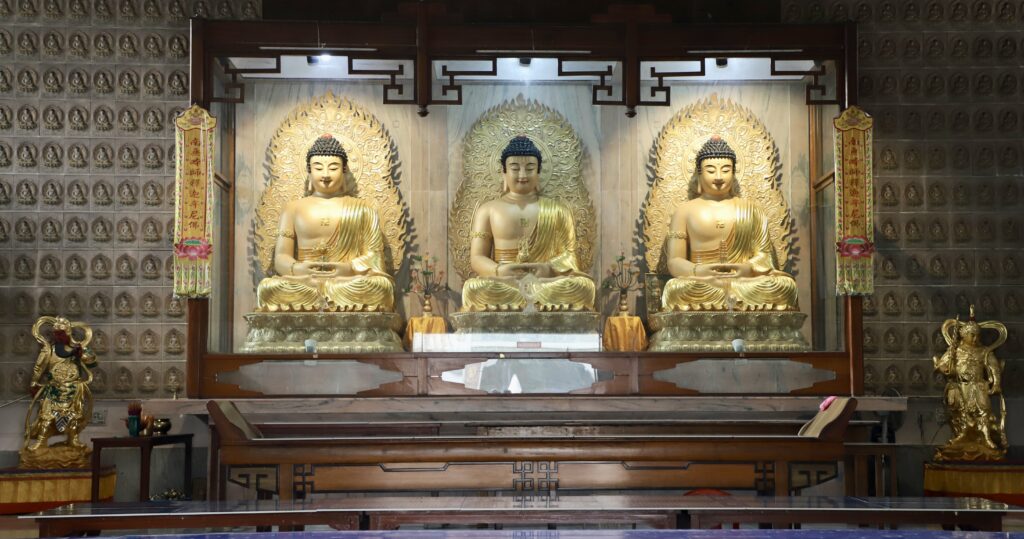
Thai Temple and Monastery – The only Thai temple to be located in India was built in the year 1956 by Thailand Monarch following the request from the then Prime Minister of India Jawaharlal Nehru. The amazing construction with a sloping roof that is curved is a visual delight to those with architectural eye. The golden tiles over the roof look brilliant in sunlight. Statue of Buddha inside the temple is made of bronze.
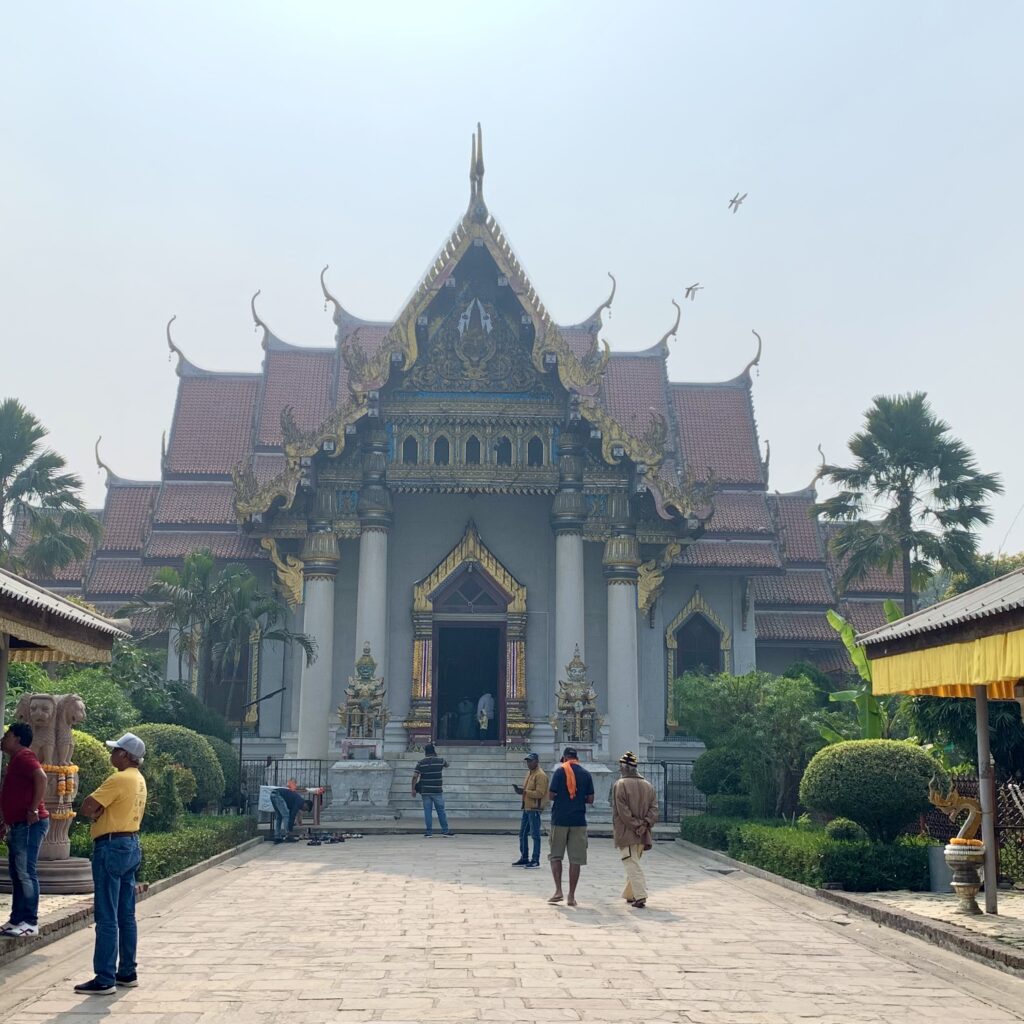
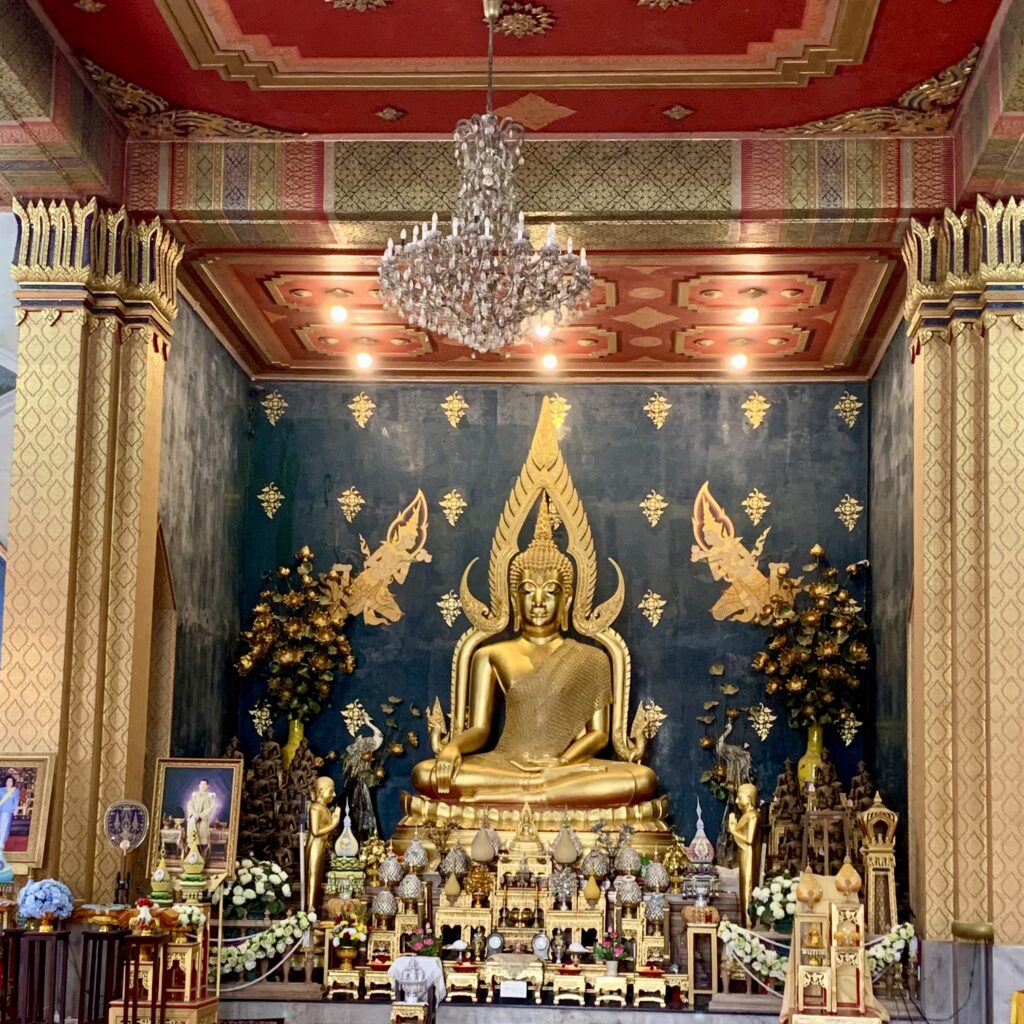
Royal Bhutan Monastery – Yet another beautiful and colorful monastery in the complex, the Royal Bhutan Monastery appeals to the followers of Buddhism with its wonderful depictions of the life of Buddha. Bhutan king constructed this monastery and the influence of conventional architecture strikes you the moment you set your eyes on the monastery. It houses a beautiful temple in which you can find 7 feet tall Buddha statue. The serene atmosphere makes it a wonderful place to meditate.
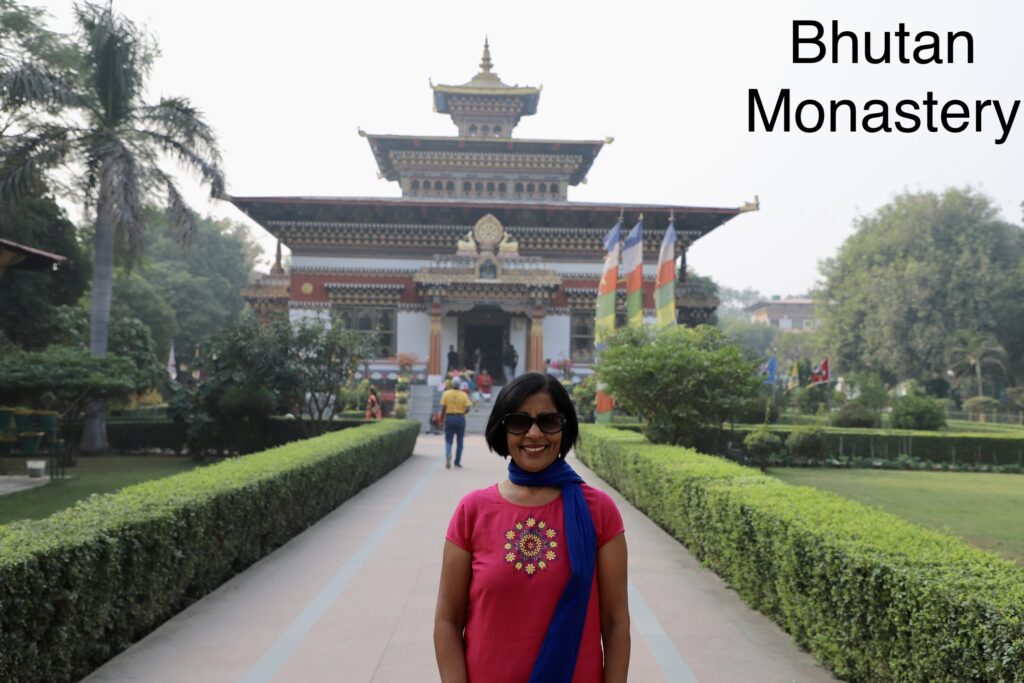
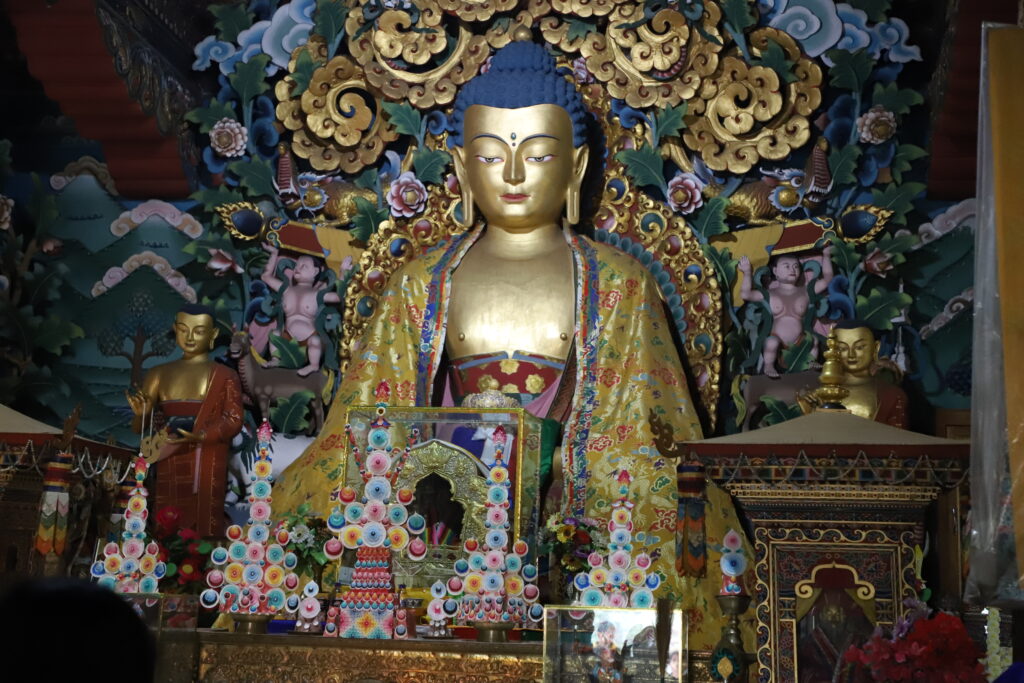
Great Buddha statue – is located at the end of the temple street and is surrounded by smaller sculptures of Buddha’s 10 principal disciples, five on each side. The Great Buddha was possibly the largest Buddha statue in India at the time it was consecrated in 1989 by the 14th Dalai Lama. The foundation stone for the statue was laid in 1982.
The total height of the construction is 80 ft (24 m) of which the Buddha makes up 64 ft (20 m), the lotus on which the Buddha sits 5 ft (1.5 m) and the lower pedestal 10 ft (3.0 m). The construction’s width is nearly 60 ft (18 m) at its maximum. The statue took seven years to complete using the labor of 12,000 stonemasons. It is constructed from a combination of sandstone and red granite blocks.

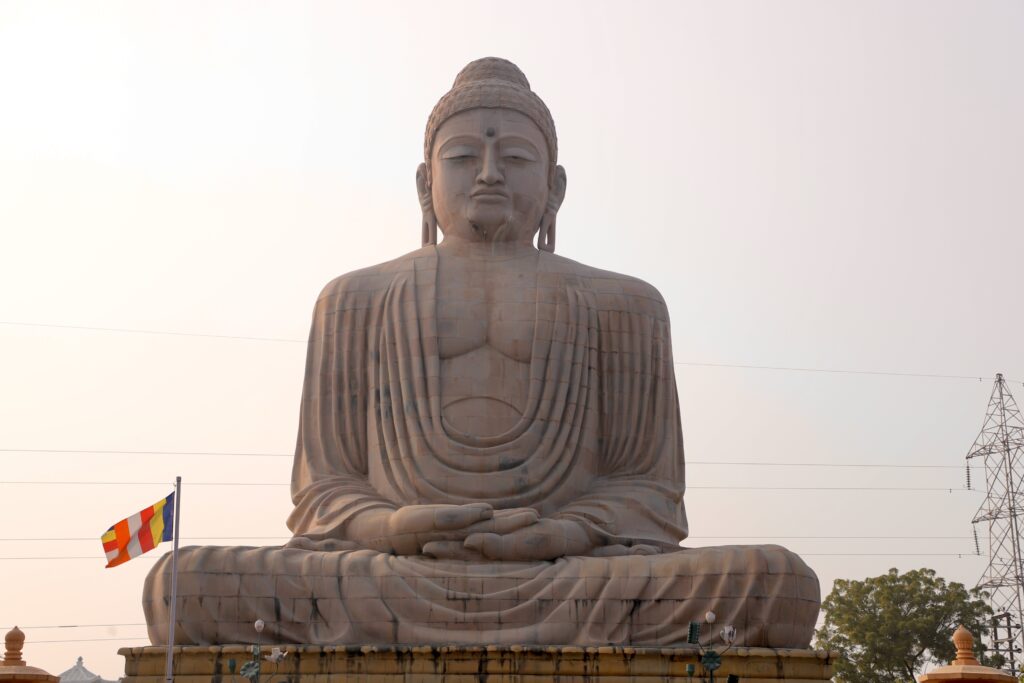
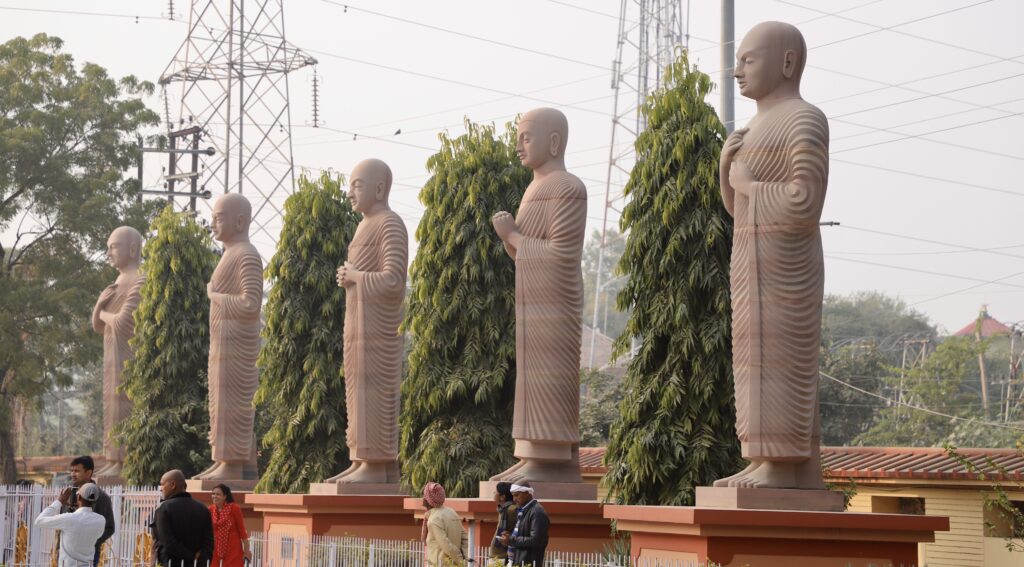
Meditation Park – This newly developed park is at the south end of the temple complex. Visitors are encouraged to meditate here from sunrise to sunset at a very nominal charge.
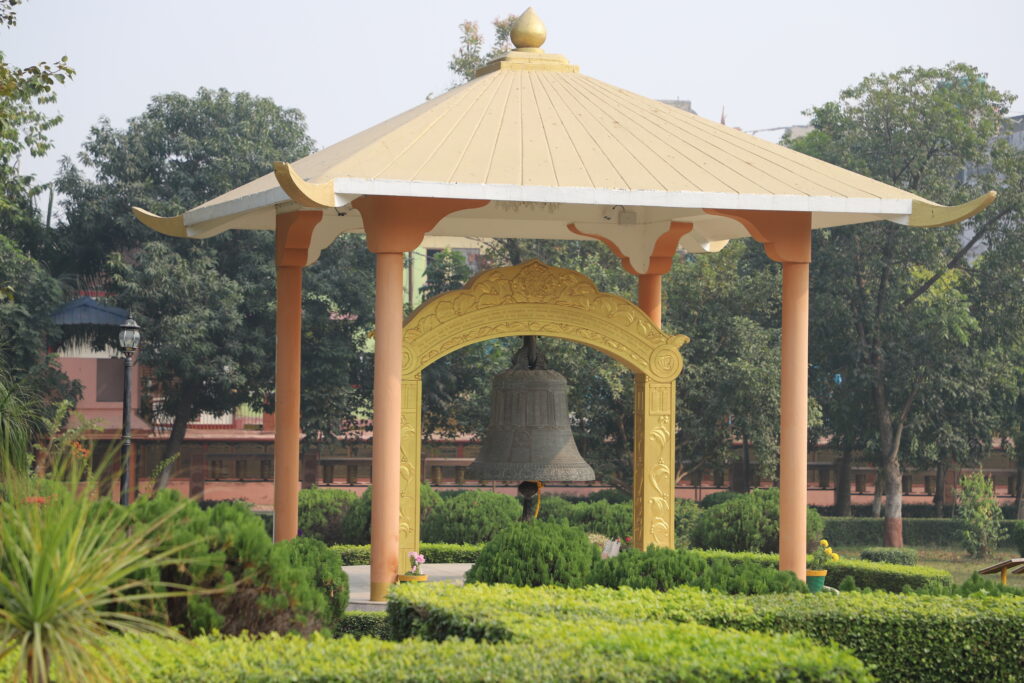
Vishnupad Temple, Gaya – Located on Falgu River banks, Vishnupad temple is considered to be constructed on Lord Vishnu’s footprints and hence the name. This ancient temple was reconstructed in the year 1787 by Indore’s queen Rani Ahilya Bai. The footprint is 40 cm in length. The huge temple complex displays images of various gods and goddesses. Temple for Lord Narasimha is found in the courtyard of Vishnupad temple. A special feature of this temple is that its eastern side is dedicated to god Shiva.
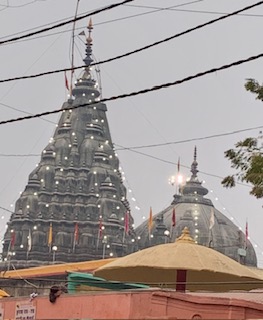
Bodhgaya Archaeological Museum – Established in the year 1956, Bodhgaya Archaeological Museum is home to several relics unearthed from this part of the world. Some of the rare collections include sculptures belonging to 1st century BC, antiques and images of Hindu deities and Buddha made of various metals including gold, silver and bronze.